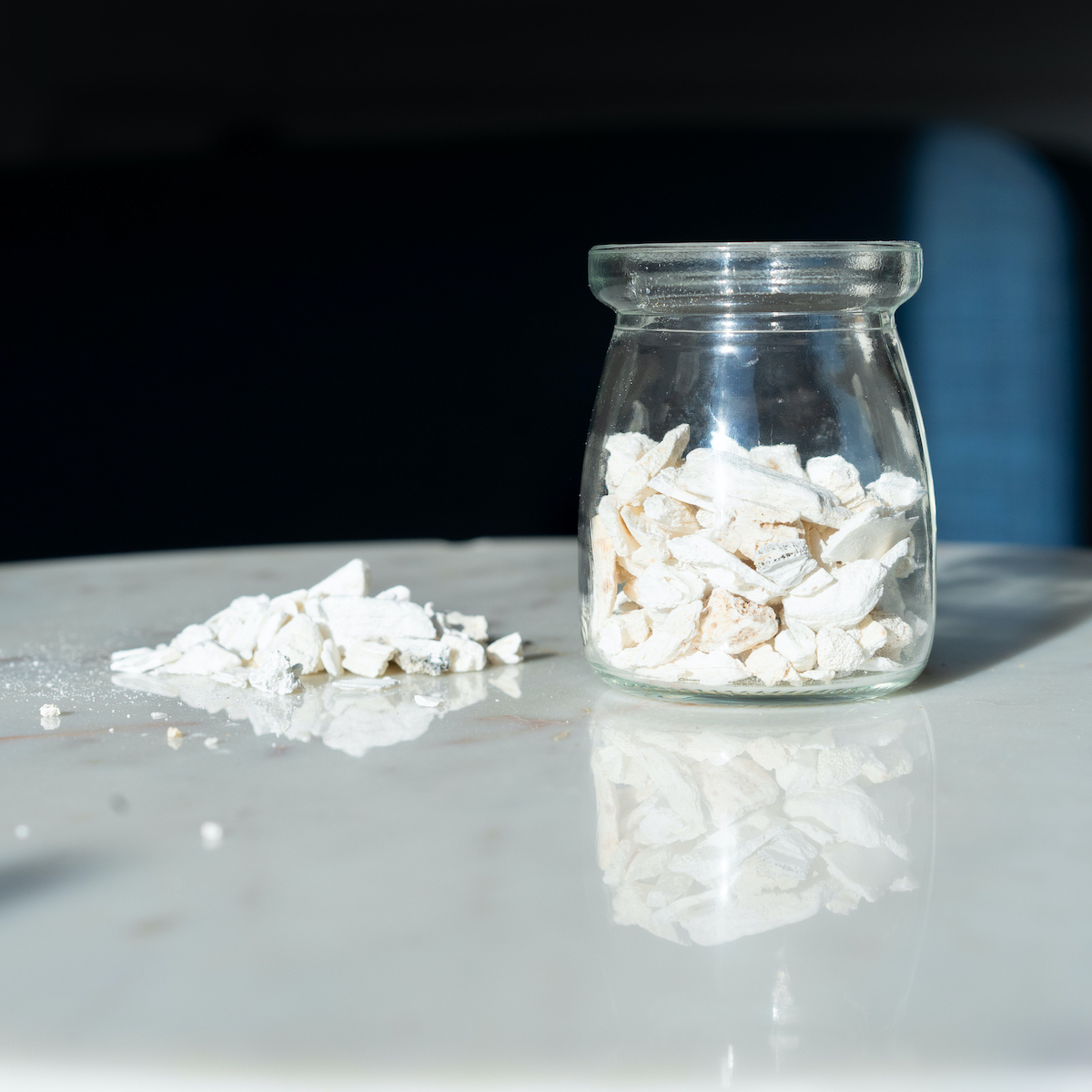
COMMON NAME (Chinese Name)
Fossilized Bone (Long GU)
BOTANICAL NAME
Fossilia Ossis Mastodi or Os Draconis
OTHER NAMES
Hua Long Gu, Bai Long Gu, Sheng Long Gu
USES
Fossilized bone refers to bone obtained from large mammals (referred to as dragons) used for various health benefits. Based on its mineral profile, fossilized bone is not an herbal plant remedy, but it is still widely used in Traditional Chinese Medicine due to its nutrient composition. Studies have reported a rich source of minerals like Calcium, Sodium, Oxides of silicones, Magnesium, Aluminum, Iron, Zinc, and Potassium that synergize the beneficial effects of other Chinese herbs when formulated in combination. The fossilized bone helps to induce sedation, relieve irritability, and promotes spirit calmness. As such it is classified as cool, sweet and astringent.Moreover, it supports optimal health of gastrointestinal health by preventing the risk of bleeding in the intestines.
In Traditional Chinese Medicine, fossilized bone is associated with a beneficial effect on the Kidney, Liver, and Heart’s health. Fossilized bone contains numerous essential nutrients that improve flesh generation and heal sores. Due to astringent properties, it helps to improve digestion, treat diarrhea, and prevent excessive fluid loss and night sweats. It can also relieve insomnia, support sleep quality, and improve symptoms of epilepsy, psychoses, and convulsion.
Chinese medicinal books have reported that it subdues yang and promote liver calmness and relaxation. When used in combination with Mu LI, it offers heart benefits and helps relieve palpitations and cardiac arrhythmias. Also, it reduces headache, improves tinnitus, and relieve vertigo. Upon topical application, it heals chronic sores and ulcerations.
PREPARATION & ADMINISTRATION
Fossilized bone remedies are formulated for oral administration in powder, decoction, and pills (capsule). Plus, sometimes whole bone is cooked, crushed and powder form is obtained for medicinal uses. Usually, it is used with other herbs such as Mu Li, Bai Shao, Biota, Zhi Yuan Zhi, Oyster shell, Zizyphus, etc., in different formulations for medical use.
PRECAUTIONS
Usually, it does not cause any side effects; however, toxic or higher doses should be avoided. However, it should not be used concomitantly with Gypsum Shy Gao and Fish. Also, have no reported interaction with drugs or other herbs. It is contraindicated during certain medical conditions, including Damp-Heat Conditions.
It is advised to avoid its use in case of hypersensitivity or allergy. Plus, consult your doctor or certified herbalists during pregnancy or breastfeeding. You should consult with a certified herbalist, physician or other qualified healthcare professional before consuming fossilized bone.
REFERENCES
Huisheng Xie D.V.M PhD, Vanessa Preast D.V.M pHd “Xie’s Chinese Veterinary Herbology” 2010.
Philippe Sionneau “Pao Zhi: An Introduction to the Use of Processed Chinese Medicinals” translated by bob flaws; 1995.
Simon Becker, Bob Flaws, Robert Casañas, M.D “The Treatment of Cardiovascular Diseases with Chinese Medicine: A Textbook” 2005.
Zhang, Han et al. Zhongguo Zhong yao za zhi = Zhongguo zhongyao zazhi = China journal of Chinese materia medica vol. 36,13 (2011): 1839-40.

Comments (0)